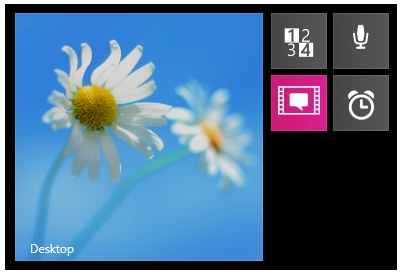Reading between the Microsoft CFO lines on Windows Blue and the Start Button

It may seem like a throwaway comment when a Microsoft exec says the company is interested in being responsive to customer feedback.

But when we're talking about Microsoft's Windows business, every official pronouncement is carefully measured and meant to signal an intent. That's why it's worth parsing the words of Peter Klein -- the outgoing Chief Financial Offer (CFO) at Microsoft -- around the next version of Windows.
During the analyst call on April 18 which coincided with Microsoft's Q3 FY 2013 earnings release, Klein reiterated that Microsoft is stepping up its Windows release cadence with the next version of Windows, codenamed "Windows Blue." Klein also reiterated that smaller screen Windows devices are in development by Microsoft OEMs.
But it was another of Klein's remarks, which many would consider an almost obligatory comment, that really caught my attention. Klein said that Microsoft was going to be "responsive to customer feedback" with Blue.
His exact statement (from a transcript from the analyst call): "Looking ahead, we will release the next version of Windows, codenamed Windows Blue, which further advances the vision of Windows 8 as well as responds to customer feedback."
I take this as yet another confirmation that Microsoft is moving toward make the boot-to-desktop option and some kind of Windows Start button a part of Windows Blue. I don't know if these options are likely to be available across all Windows 8 and Windows RT SKUs (or just Pro and Enterprise, which is what my Windows Weekly cohost Paul Thurrott is hearing.) I also don't know if this Start Button will just be something that brings users directly to the Metro Start Screen. But I'd be that's far more likely than something that would bring them back to the old Start Menu.
No, I can't prove I am connecting the dots correctly, of course. But if you look at the feedback on my blog to my earlier post about these two features making a comeback as options in Windows Blue, it sure seems like the majority of my readers want these capabilities.
Business users are especially keen on seeing these two things return to Windows 8, especially because they don't want to incur retraining and help desk costs resulting from implementing a vastly different user interface.
Plus, think this through: In April 2014, Microsoft is terminating support for Windows XP. There are still millions of corporate desktops running Windows XP. In fact, according to the latest NetMarketshare usage data, XP is the No. 2 version of Windows installed on desktops, second only to Windows 7.
Microsoft wants these folks to upgrade. But if they are fearful or uncertain about Windows 8, these users will go to Windows 7 instead. And once they are on Windows 7, it's like XP all over again. It's another version of Windows that will be too good for its own good. These corporate users will be running Windows 7 for the next decade-plus, with little/no reason or interest in going to Windows 8.
So if you're Microsoft, which is the lesser of two evils? Bring back two features that could spur greater corporate adoption of Windows 8 -- even if company watchers accuse you of back-tracking? Or run the risk of losing a huge part of your installed base to Windows 7, or another non-Microsoft alternative?
If Microsoft listens to what users want with Windows Blue, all I'll say is it's better late than never....